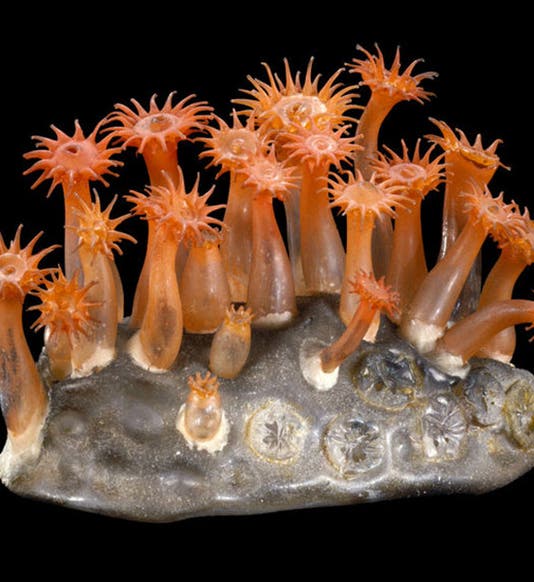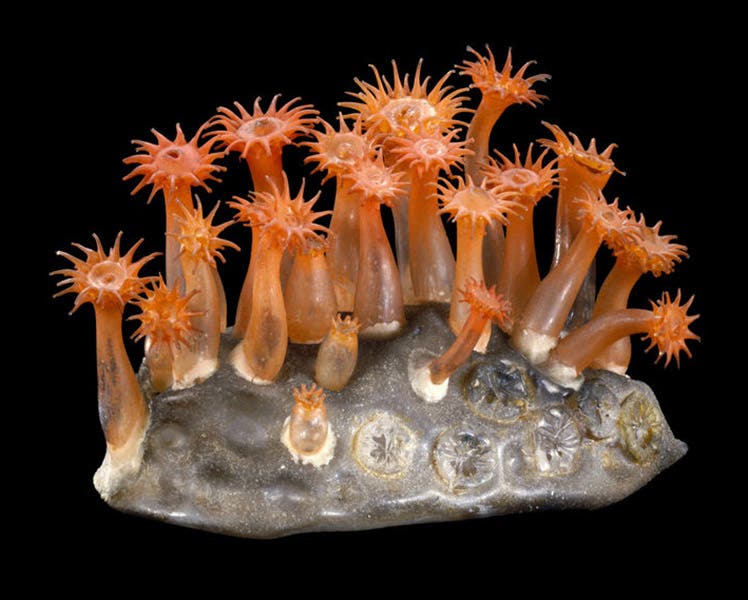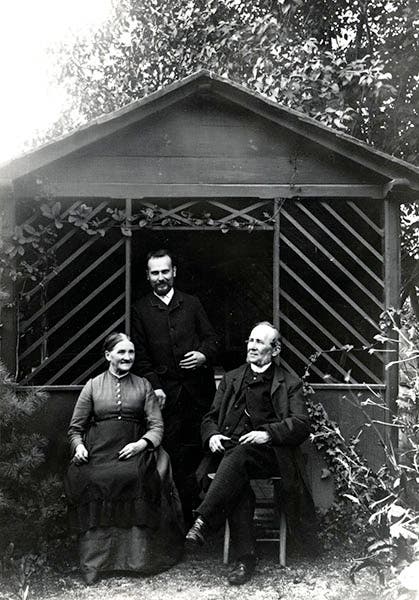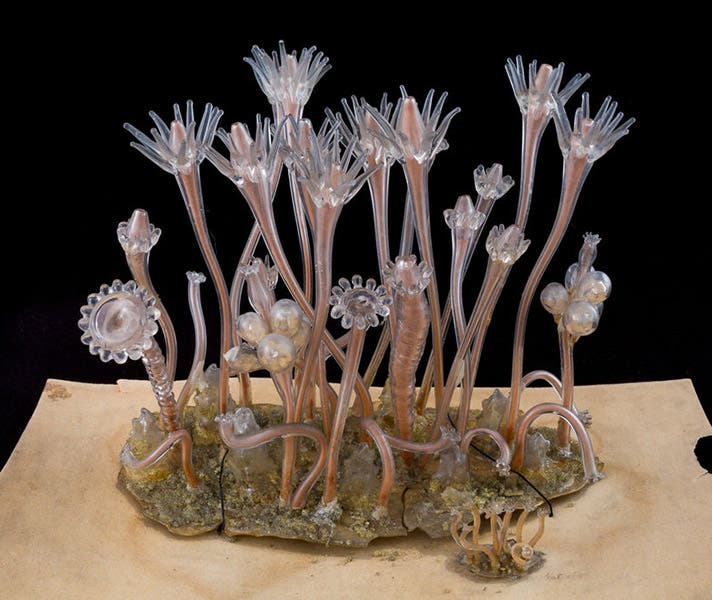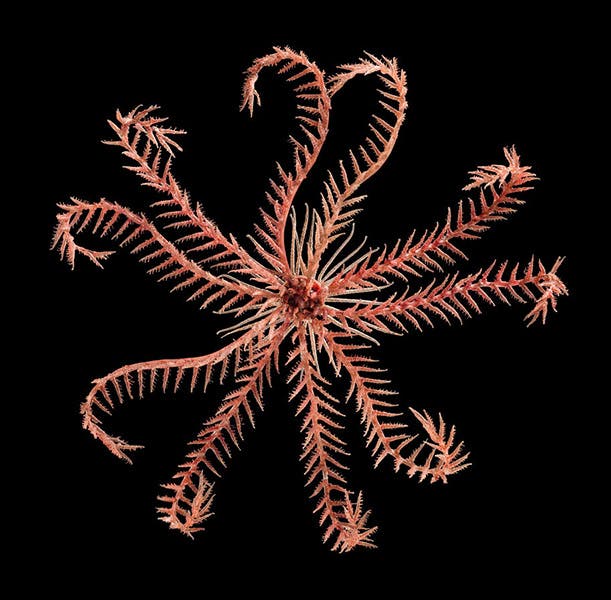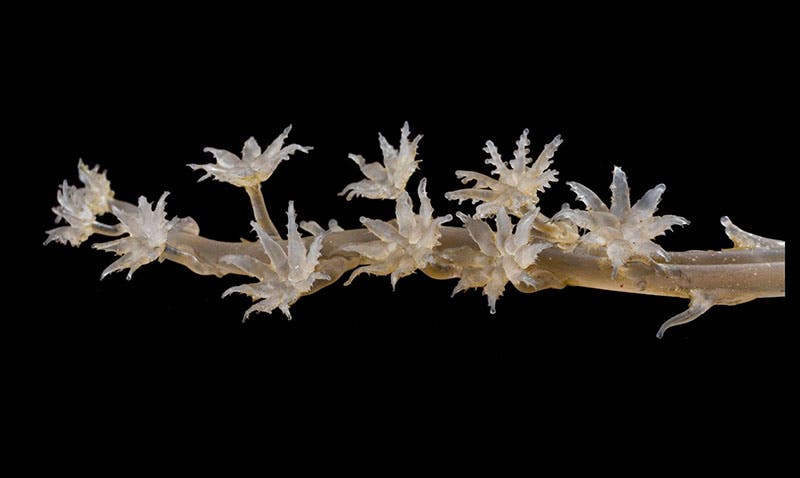Scientist of the Day - Leopold Blaschka
Leopold Blaschka, a Bohemian glass blower, died July 3, 1895, at the age of 72. Leopold came from a long line of glass blowers – both his father and grandfather practiced the trade, or perhaps art, as would Leopold’s son Rudolf. Originally, the Blaschkas made glass jewelry and glass eyes. Leopold in the 1850s became proficient in a technique called flame working, where an alcohol flame aided by a jet of compressed air was used to melt glass and allow it to be shaped.
In the 1860s, Leopold was asked by a Dresden museum curator if he would have a go at sculpting some marine invertebrates, like octopi and sea anemones, in glass. Displaying marine invertebrates was a problem for museums, since they cannot be preserved by taxidermy, and no one wants to look at animals pickled in jars. Leopold had made some drawings of sea creatures during a becalmed ocean crossing some years before, and with these and some book illustrations before him, he gave crafting anemones a try. He was successful beyond anyone's expectations, and a new career opened up for Leopold and his son Rudolf, now part of the business.
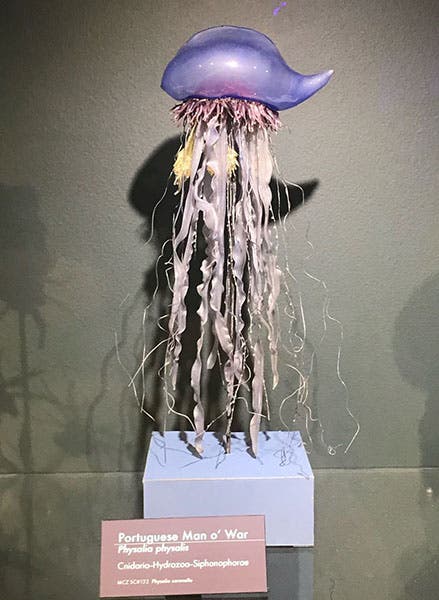
Portuguese man o’ war, glass artwork by Leopold and Rudolph Blaschka, Museum of Comparative Zoology, Harvard University (photo by Ben Ashworth)
If you have heard of Leopold and Rudolf Blaschka, it is probably because of the Glass Flowers at Harvard. These are indeed sensational, and I have written a post on Rudolf in which I showed photos of the display room and the individual glass plants, photos that I took on a visit in 2019. But these were made much later. The marine invertebrates came first. Harvard has some marine invertebrates on display, and my son recorded one of these, a Portuguese man o’ war (third image). There are also marine invertebrate specimens on display at the Boston Museum of Science, Oxford, the University of Pisa (fourth image), in Dresden, and at many other museums.
But one of the best collections of Blaschka sea creatures is at Cornell, hand-picked by President Andrew Dickson White in 1883 from specimens offered by Ward’s Natural History Establishment in Rochester. White bought some 600 items. They were used in the classroom for decades; then lost for half a century, before 570 of them were recovered and refurbished and put on display, many of them on loan to the Corning Museum of Glass, forty miles away. The curators have photographed them beautifully, and four of our photos here, showing a star coral, snail fur, a brittle star, and a sea pen, were taken from the Cornell digital catalog. You can see 260 of them online at the link, spread over 26 web pages. Each thumbnail, if nudged, will yield a lovely, well-lit, high-resolution photograph. And I am sure that they look ever more amazing in the flesh, so to speak.
I have never seen the Cornell Collection of Blaschka Marine Invertebrates, and believe me, it is on my bucket list for the next time I am anywhere near upstate New York. I do own a book by the former curator of the Cornell Collection, Drew Harvell, called A Sea of Glass (Univ. of California Press, 2016), which has some beautiful illustrations of Blaschka artwork, but it is really more about Harvell’s quest to see the creatures depicted by the Blaschka’s in their natural oceanic habitat. If there is a print catalog of the Blaschka Collection at Cornell, I am not aware of it; I guess I should be happy that we have the digital one.
If anyone knows of other locations displaying Blaschka marine invertebrates, please let me know, and send photos if you wish to share them.
William B. Ashworth, Jr., Consultant for the History of Science, Linda Hall Library and Associate Professor emeritus, Department of History, University of Missouri-Kansas City. Comments or corrections are welcome; please direct to ashworthw@umkc.edu.

